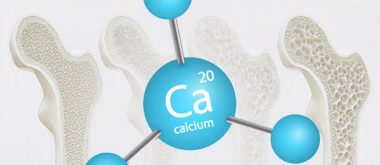With life expectancy steadily increasing, the challenge of treating age-related conditions such as osteoporosis is becoming more pressing. Scientists have identified a protein that blocks the activity of bone-building cells (osteoblasts) by preventing them from maturing on their way to bone-building sites, a new study has found. In a paper published in Communications Biology, a team of researchers led by Dr. Amy Naylor and Professor Roy Bicknell, together with their team, which includes Dr. Georgiana Neag from the University of Birmingham, found that the protein CLEC14A, which is found on blood vessel cells called endothelial cells in the bone, blocks the function of bone-developing cells called osteoblasts.
New Treatment Approaches for People With Musculoskeletal Disorders
The role of endothelial cells during bone development is to transport immature osteoblasts to sites where new bone tissue is needed. However, when the CLEC14A protein is also present on the outside of the endothelial cell, the osteoblasts are prevented from maturing to the point where they can form bone tissue. In this study, osteoblast cells were taken from transgenic mice that were either bred to produce CLEC14A or not.
The osteoblasts were then used in vitro in an induction solution, and the team found that cells taken from the protein-free mice matured after four days, while those in the presence of CLEC14A matured eight days later. Furthermore, the study found a significant increase in mineralized bone tissue in the CLEC14A-free samples on day 18. Dr. Amy Naylor, associate professor in the Department of Infection, Inflammation and Immunology at the University of Birmingham, said: “Over the past decade, a specific type of blood vessel cell in bone has been identified. This blood vessel is called a ‘type H vessel’ and is responsible for directing bone-forming osteoblasts to the sites where bone growth is required. Now, we have found that a protein called CLEC14A can be found on the surface of type H blood vessel cells.
In their experiments, the researchers found that osteoblasts that traveled on endothelial cells produce less bone in the presence of the CLEC14A protein. Conversely, they produce more bone when the protein is removed. This additional understanding of how blood vessel cells control bone-forming osteoblasts under normal, healthy conditions offers a path to developing treatments for patients with inadequate bone formation, such as those with non-healing fractures, osteoporosis or chronic inflammatory diseases, according to the researchers. Poor bone formation is an important factor in bone damage in osteoporosis and inflammatory arthritis. This can lead to disability, pain and fatigue, which affects people’s lives in a variety of ways, including their ability to work, the time they spend with family and friends, and their well-being. Researchers hope that these findings will ultimately lead to new treatment approaches for people with musculoskeletal disorders.
Ginseng As an Alternative Osteoporosis Treatment
Although effective medications exist for treating osteoporosis, these can come with drawbacks. Several drugs have proven effective at either preventing bone loss or promoting bone formation, but each comes with potential side effects, including injury to the jaw and leg bones. In the search for alternative drug candidates, researchers report in ACS Central Science that they have discovered and fully replicated a compound from the botanical female ginseng that showed potent anti-osteoporotic activity in cell tests.
The researchers performed a chemical extraction of the medicinal plant and identified two new compounds, which they named falcarinphthalides A and B, and which were structurally distinct from anything previously discovered in female ginseng. The team then developed laboratory synthesis methods based on these mechanisms and produced the compounds in quantities sufficient for biological testing. Inspired by the traditional efficacy of female ginseng, the team tested the compounds for their effects on the formation of cells called osteoclasts that promote bone breakdown. They observed that only falcarinphthalid A and its precursors showed osteoclast-inhibiting activity and anti-osteoporotic effects. Further analysis showed that falcarinphthalide A blocked key molecular signaling pathways involved in osteoclast formation. The researchers say this study opens up possibilities for new osteoporosis treatments based on the female ginseng compound, either as is or as a structural template for further drug development.






